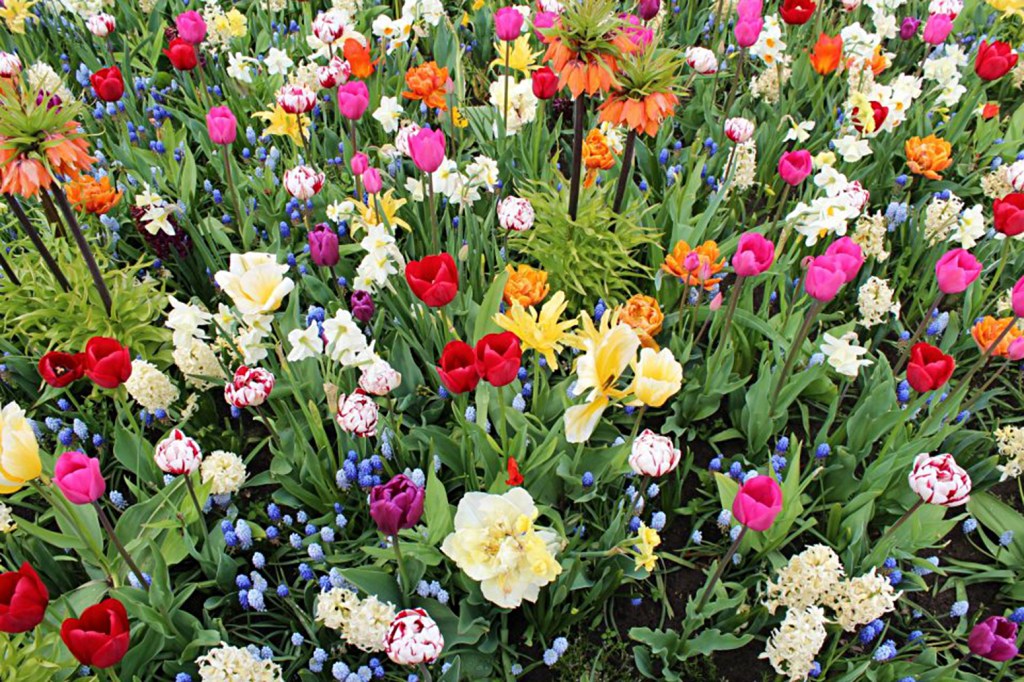ONE GARDENER TO ANOTHER: Fall planted bulbs bring the first sign of spring
Published 6:45 am Monday, November 19, 2018

- Tulips
Two weeks ago, I was wearing shorts and a T-shirt and now I feel like I’ve stepped into a time machine that rocketed me forward into winter.
The cooler temperatures of fall jumped right into the season, headfirst, and immediately turned cold. The first freeze seemed to come out of nowhere and take the rest of my blooms with it.
Trending
Where my statuesque angel’s trumpets stood days ago — plentiful with hanging bell-like yellow blooms — now stand tall, dark stalks with the litter of fallen flowers at their feet.
Soon, all the leaves will have hit the turf and there will be just a smattering of color in the yard. But there is hope. Fall is the time to plant spring-blooming bulbs for that first splash of color next year.
I was fortunate enough to attend Floriade, a gardening and horticulture expo in Holland that is held every 10 years. There was a wide variety of plants and flowers at the event, however, the mass plantings of mixed spring bulb flowers were extraordinary.
It is a very common practice to plant bulb flowers in large numbers and relatively close together for a big statement. I will tell you, seeing thousands planted together is stunning.
Daffodils and tulips are synonymous with spring.
Daffodils
Trending
Frequently, daffodils are seen in yellow and white, with the flowers being a combination of the two colors or the center trumpet and the surrounding petals being the same color, such as the most widely produced daffodil, “Dutchmaster,” which is a solid, vibrant yellow.
However, daffodil breeders have created stunning new hybrids that will be sure to wake up the garden. “Red Devon,” with its sunburst orange center and yellow petals, received the Award of Merit in 1985 for its showy qualities. “Tahiti” also bursts forth rich orange petals mingled with yellow in a double-flowering variety. Double-flowering refers to varieties of flowers that have extra petals, often containing flowers within flowers. A stunning example of this is the “Mary Gay Lirette” daffodil. It has frilly, ruffled, interior petals in shades of apricot or salmon that look like a peony crossed with a daffodil. “Petit Four” is another stunner with a fluffy, peachy center surrounded by bright, white petals.
Tulips
Tulips come in a large variety of colors and many have variegated (two-toned) petals in beautiful combinations. However, there are some truly unique tulips that break the mold of the everyday tulip. Fringed tulip petals have seemingly fringed edges in the same or contrasting color to the petal. There are both single and double-flower varieties.
Among the loveliest of fringed tulips are “Lambada,” with its fiery orange-red petals with yellow fringe, and “Cummins,” which has violet petals with white fringe that resemble crystalized snow topping the flower.
Parrot tulips are big and beautiful with blooms that can grow up to 5 inches wide on stems 15 to 20 inches tall, making them perfect cutting flowers. The petals of these exotic tulips are wavy, scalloped, fringed and ruffled. Parrot tulip colors range from a multitude of solid colors to variegated varieties that incorporate three and four colors.
Lily tulips have a more slender build than traditional single-flower tulips. Their pointed petals seem to have a waistline that gives the bloom a svelte profile. Knockouts in this category include “Rigas Barikades,” with its twisted, bright red-orange petals and purple-striped leaves that add another dimension of interest. Meanwhile, “Marilyn” has graceful white petals with a streak of red from the base to the tip.
With 150 species and more than 3,000 varieties of tulips and more than 25,000 cultivars of daffodils, there is plenty of color and texture to create waves of spring splendor. Until next week, happy gardening.
— Irland, a member of the Limestone County Master Gardeners, can be reached at kippirland@hotmail.com. For more information on the Limestone County Master Gardeners, visit http://mg.aces.edu/limestone.





